Martley – Enigmatic Heraldry and a Yorkist Effigy
The Heraldry
The pretty church of St Peter sits on rising ground overlooking meadows on the edge of the village of Martley in Worcestershire. Much of the inside is decorated with wall paintings, but it is the patterns around the easternmost window on the south side which is of major interest to the heraldist. The images opposite given a general view of the window, together with an attempt to emphasise some of the features. To appreciate the significance of the design it is important to give a potted history of the ownership of Martley during the late medieval period.
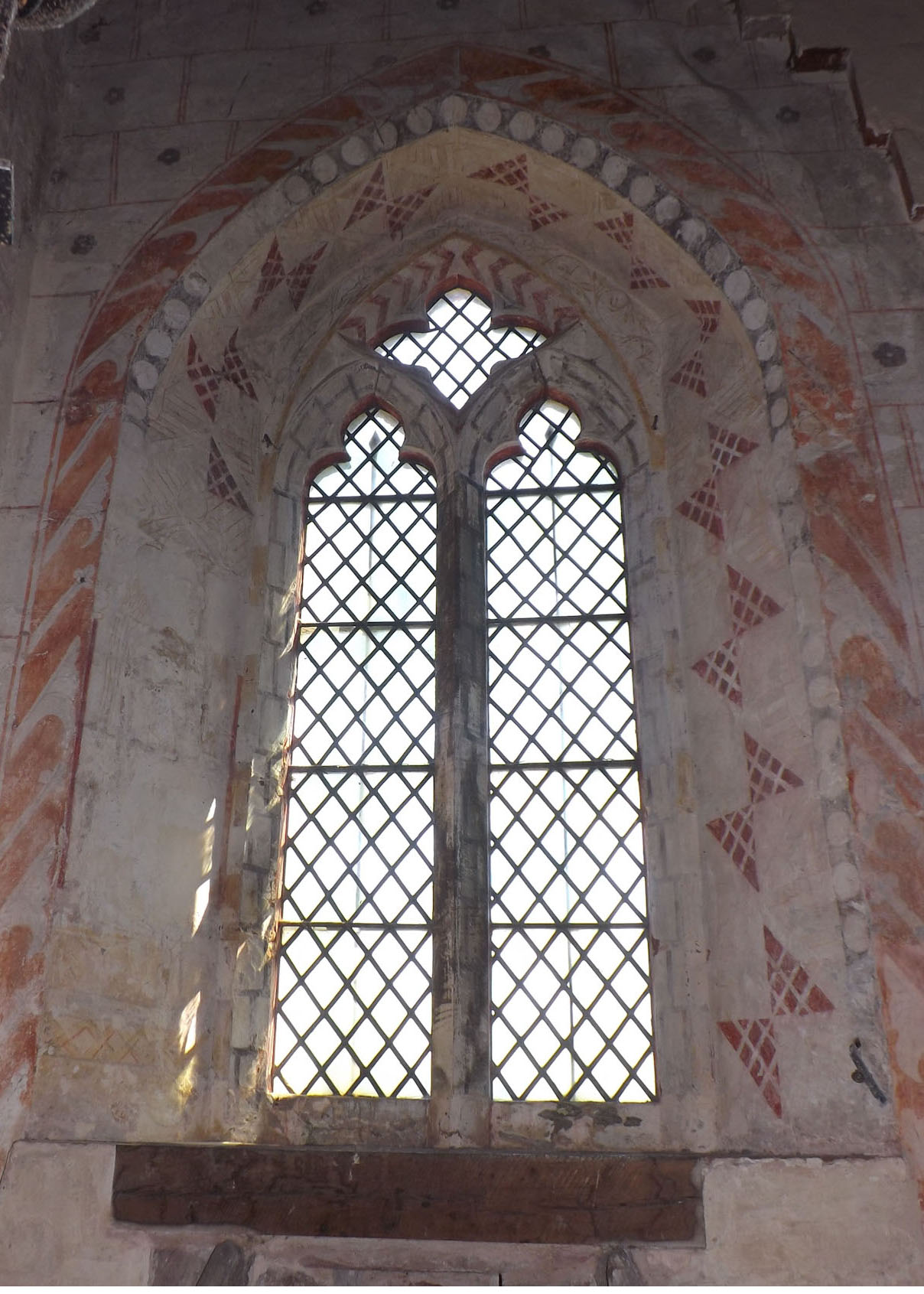
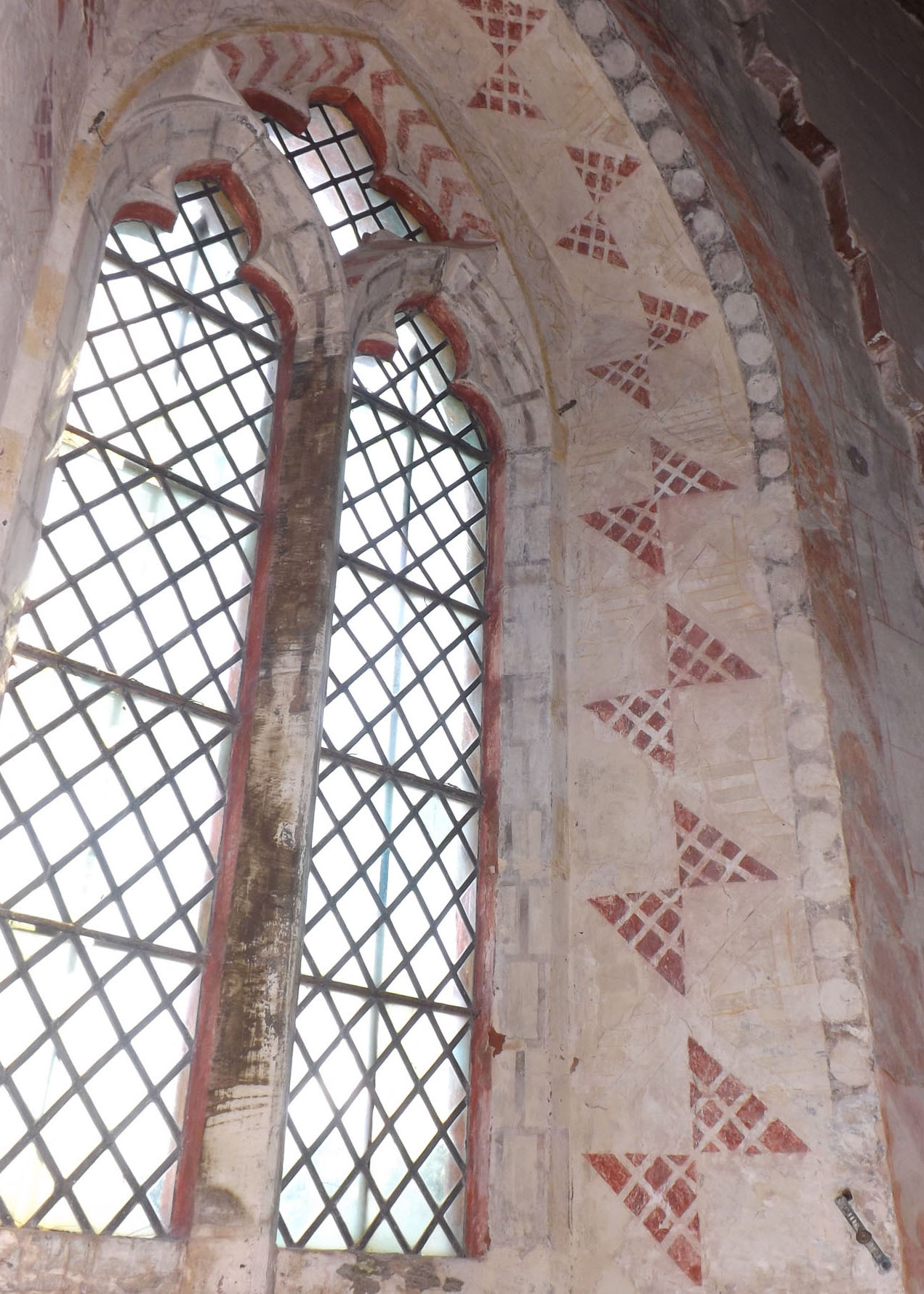
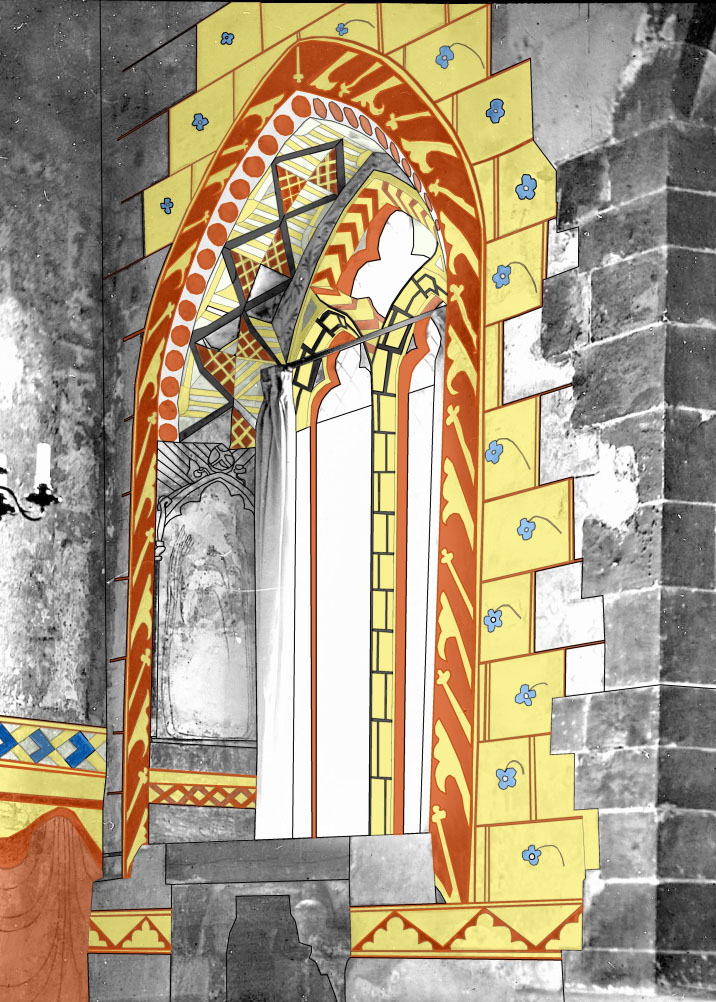
The History of the Manor
To appreciate the significance of the design, it is important to give a potted history of the ownership of Martley during the late medieval period. Some time before 1244 it was granted by Henry III to Geoffrey le Despenser, and the Despenser family were to hold it, on and off, for almost a century. Their ownership of the manor came to an abrupt end in 1326, however, following the deposition of Edward II and the summary execution and attainder of Hugh Despenser the Younger. Martley was then granted to John Wyard, a king’s yeoman, but the Despensers had somehow regained control by 1341. Edward Despenser, nephew of Hugh the Younger, was in control in 1364, when he was summoned to parliament to prove his right to the manor. The verdict clearly went against him, and by 1393 Martley was in the hands of John Wyard’s granddaughter Elizabeth, who was married to John de Harley. Having no sons, they willed Martley to Roger Mortimer of Tedstone Wafre (d1402), the husband of their daughter Maud. This Roger Mortimer was only distantly related to the earl of March, being descended from Roger Mortimer of Chirk (d1326) a younger son of Edmund Mortimer of Wigmore (d1304). When Roger’s grandson Hugh died in 1460, possibly supporting Richard of York at the battle of Wakefield, ownership of Martley passed to his widow Eleanor Cornewall. She died in 1519 and Martley went to her grandson Thomas West, lord De La Warr.
The Despensers
The Mortimers
The images below show the Despenser arms on a shield and on a lozenge. Looking at the detail of the window painting on the right it is clear that the painter intended to display the Despenser arms on a lozenge. But the significant bend sable is missing on every repetition of the pattern. As they stand, these are the arms of Dutton, not Despenser, but the Duttons seem to have no connection with Martley.


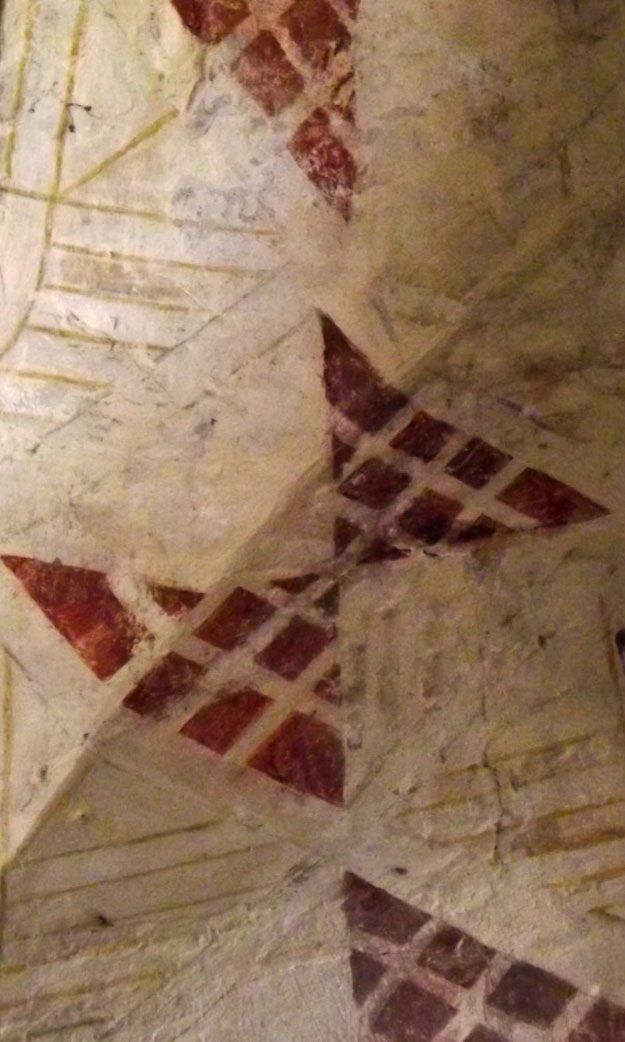
Around the window at Martley we see triangular halves of the Mortimer arms fitted alongside the Despenser arms. But something is wrong. The Mortimers of Martley differenced their arms by changing the central escutcheon from argent to ermine and this can be clearly seen in the contemporary arms of Sir Hugh Mortimer (d1460) in a window at Ockwells. But there is no sign of the ermine escutcheons anywhere round this window.
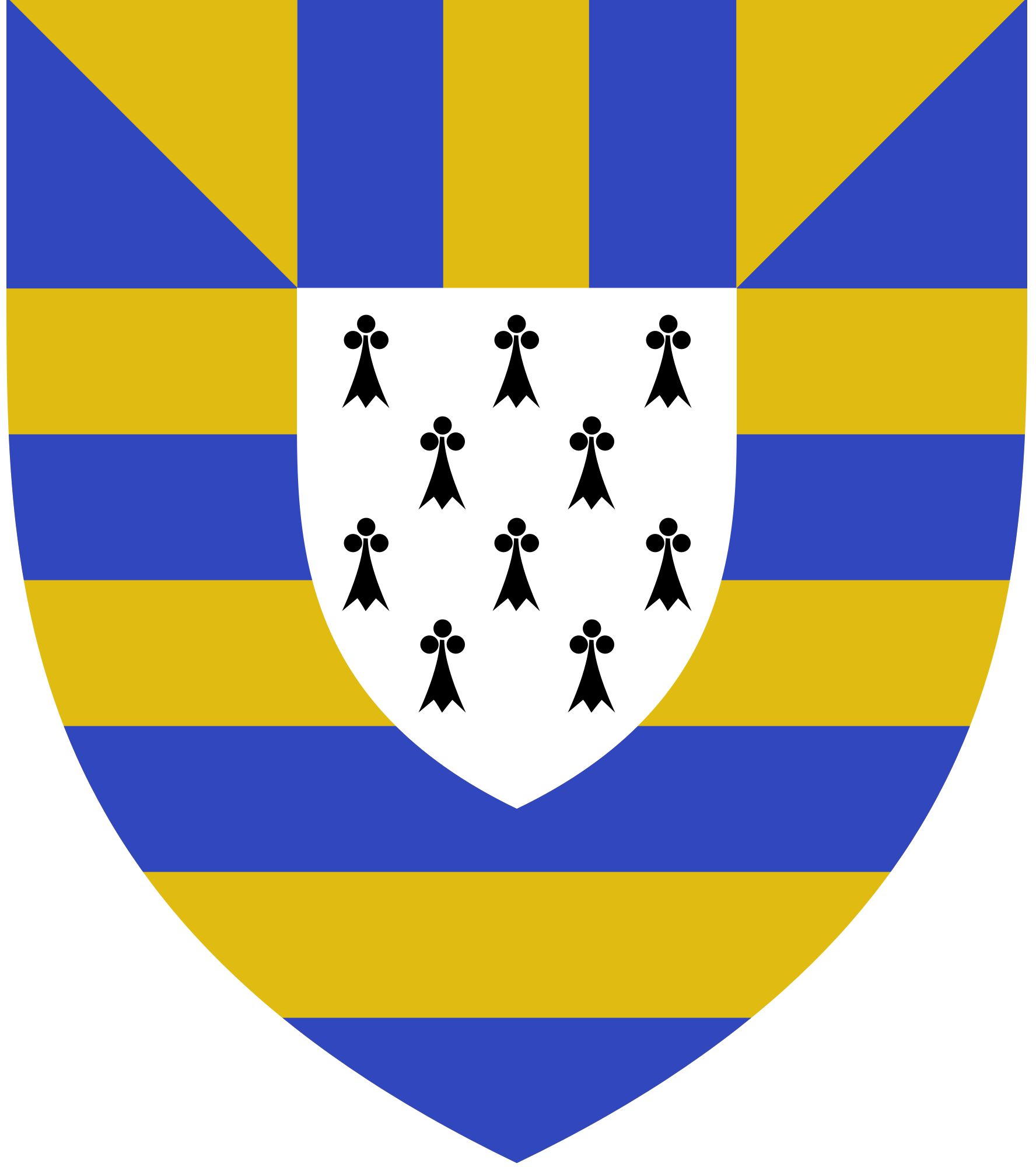
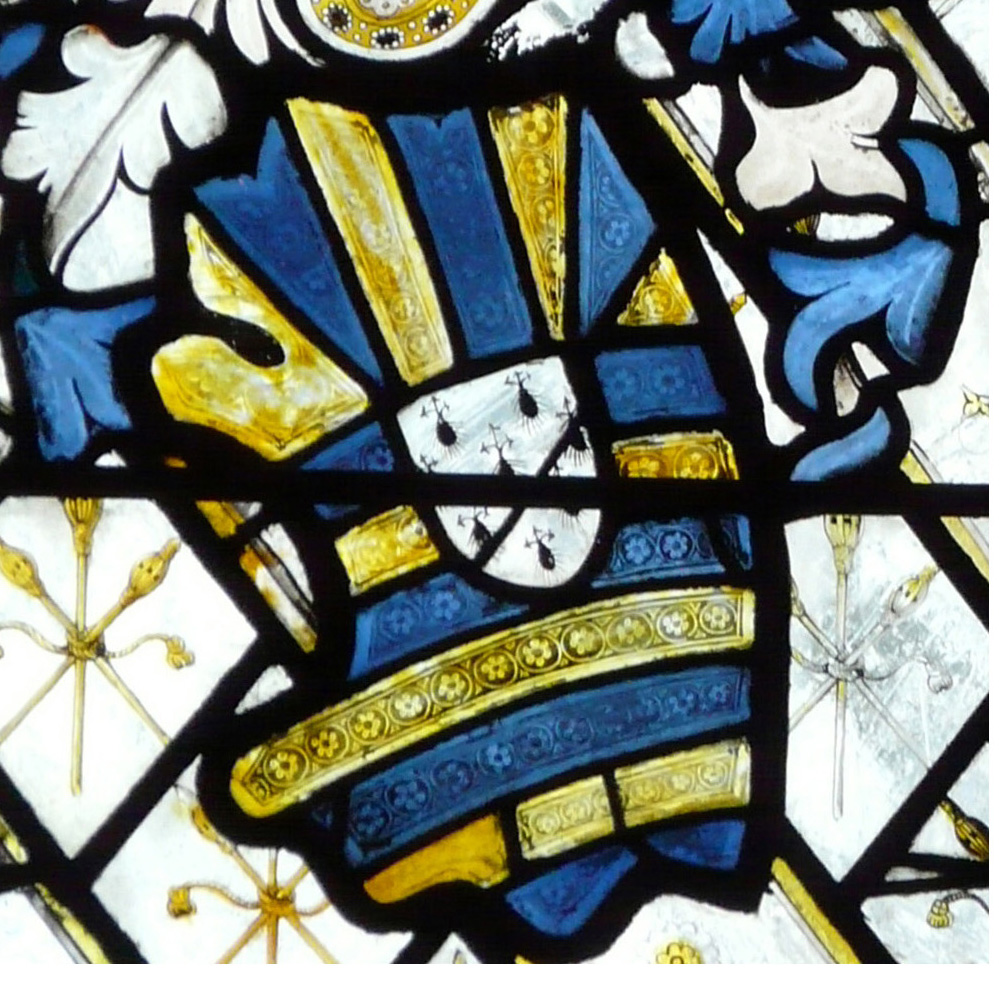
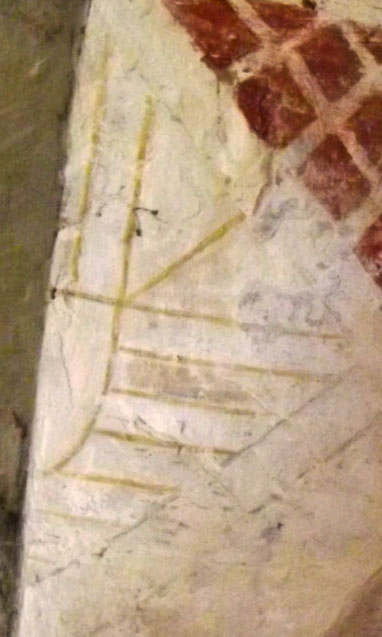
The Clares
The Cornewalls
Back in 1306, Hugh Despenser the Younger (d1326) married Eleanor de Clare. She was one of the three great Clare heiresses who shared the inheritance of their brother Gilbert de Clare, Earl of Gloucester who was killed at Bannockburn in 1314. Hugh then became Lord of Glamorgan in the right of his wife. The Clare arms are shown below on the left. Hugh quartered the Clare arms with his own but, because he owed most of his wealth to his wife’s inheritance, he placed the Clare arms in quarters 1 & 4 and relegated the Despenser arms to quarters 2 & 3. The top of the window at Martley is clearly decorated with the Clare chevrons.
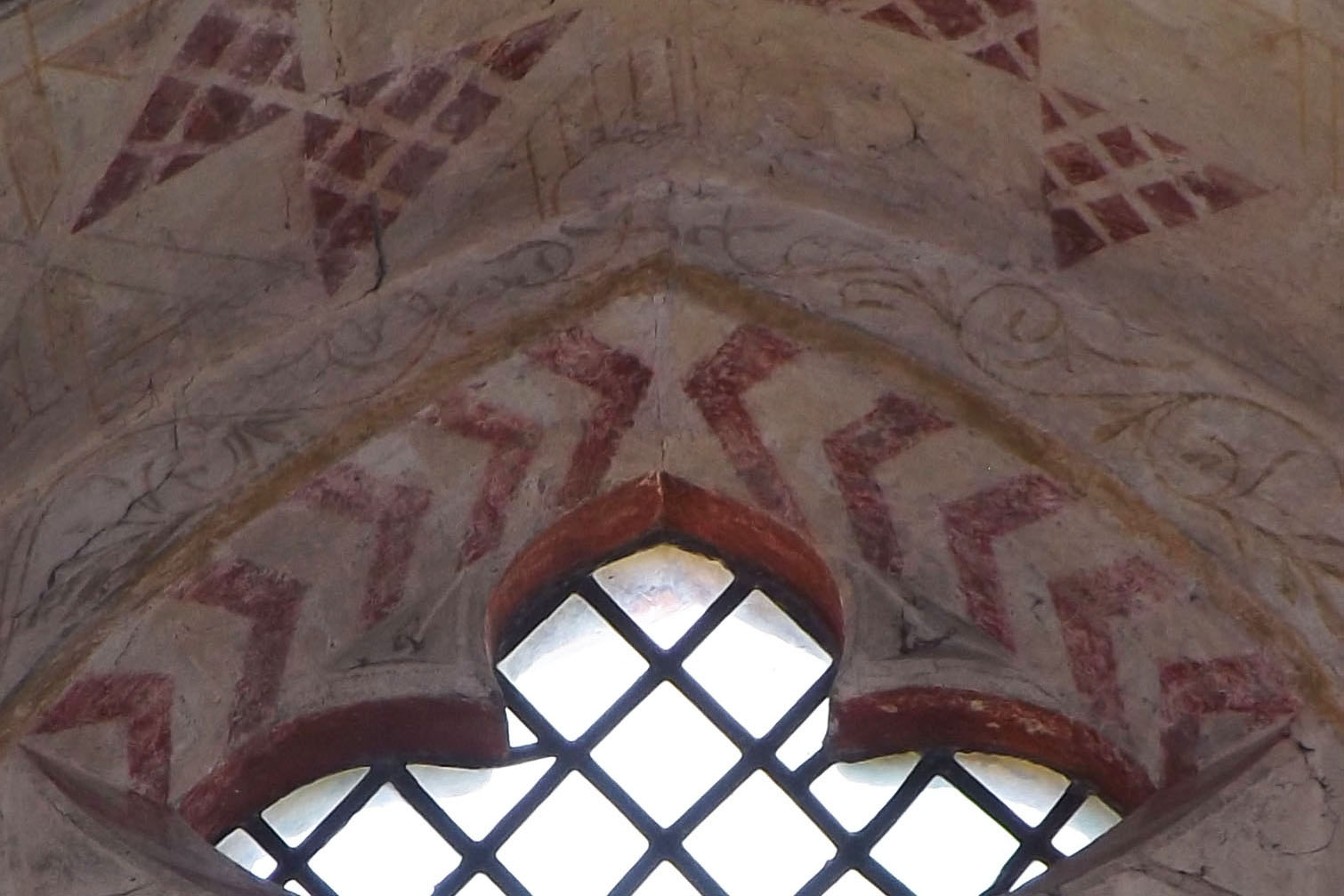


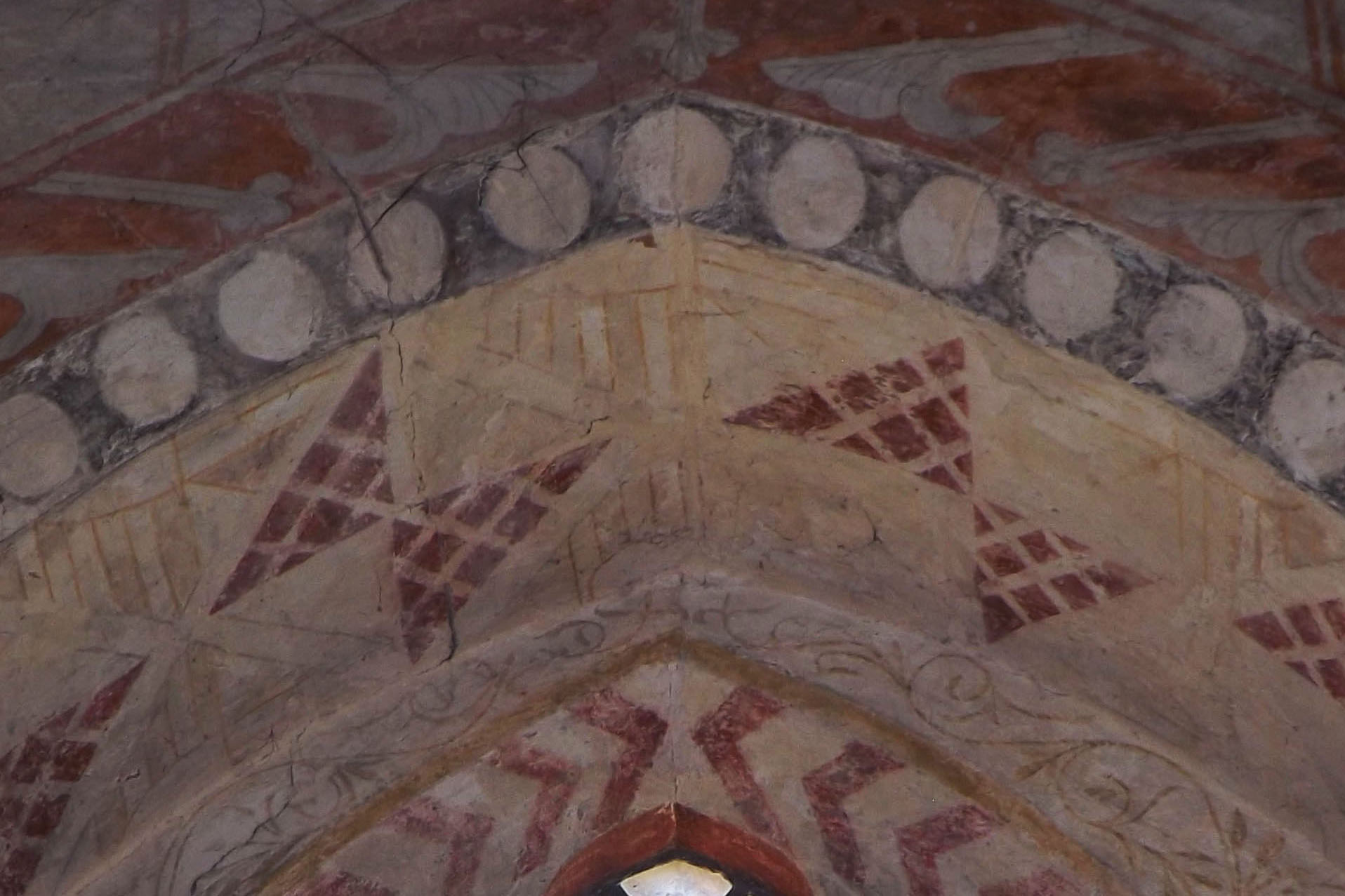
As mentioned above, the wife of Sir Hugh Mortimer (d1460) was Eleanor Cornewall. The Cornewall arms are shown opposite. Notice how the border of these arms, a bordure bezanty, is employed as a decorative frieze above the window at Martley.
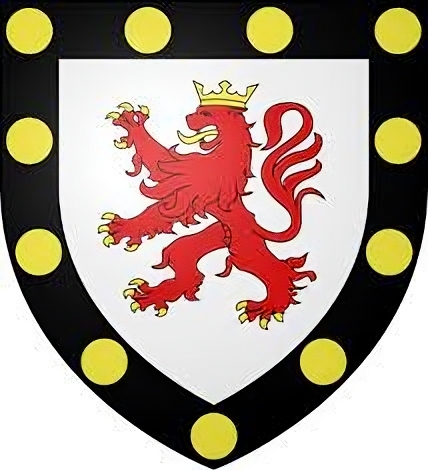
Summary and Questions
So the decoration around this window incorporates parts of the coats of arms of the Clares, Cornewalls, Despensers and Mortimers. It is possible that it was not all painted at the same time: the azure has disappeared from the Mortimer arms, if it was ever there, while it is quite obvious in the ‘Cornewall’ frieze, where it is used instead of the usual Cornewall bordure sable. The frieze, and possibly the whole scheme of decoration, must date from the period between Eleanor Cornewall’s marriage to Sir Hugh Mortimer (d1460) and her death, so between 1454 and 1519. It is unlikely to be later, as the manor was passed to the Wests, and there seems no indication of their arms here, which are argent a fess dancetty sable.
We are left with several question. The most important of these is why the sable elements of the Despenser and Mortimer arms are not present. Though rather difficult to accept, it is possible that both the Despenser bend and the Mortimer ermine were there originally, but have faded completely. Or could they, perhaps, have been omitted for purely artistic reasons? On the ceiling at Boxgrove Priory, for instance, the azure on the Mortimer arms is replaced by vert apparently for that reason, though the ermine remains intact. Or did the painters actually made mistakes? It seems unlikely.
And what is the significance, if any, of the swirling pattern beyond the Cornewall ‘frieze’, shown opposite?
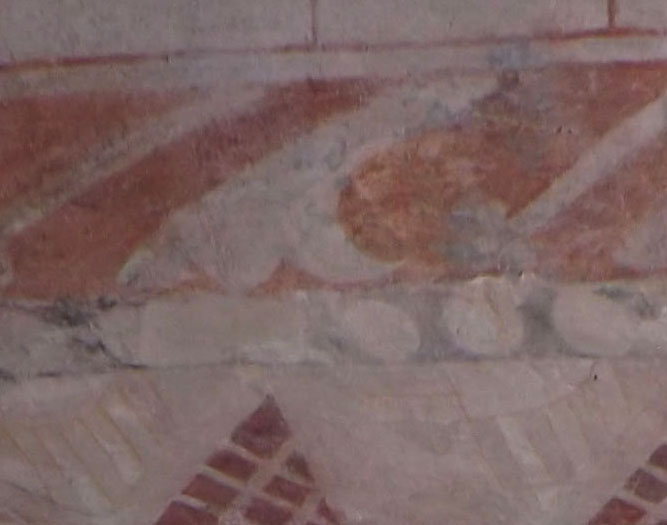
The Yorkist Knight
We don’t know for certain who this knight was. The obvious candidate is Sir Hugh Mortimer, lord of Martley, who died in 1460, just before Richard of York was killed at the battle of Wakefield. He wears the Yorkist collar with alternate suns and roses. There’s just one problem. The Mortimers of Wigmore used a panache of feathers for their crest and their distant relations at Martley don’t appear to have used a different one. Indeed, in a contemporary window at Ockwells in Berkshire Sir Hugh is shown with his panache. Unfortunately the effigy at Martley has a quite different crest. The identification remains unsettled.
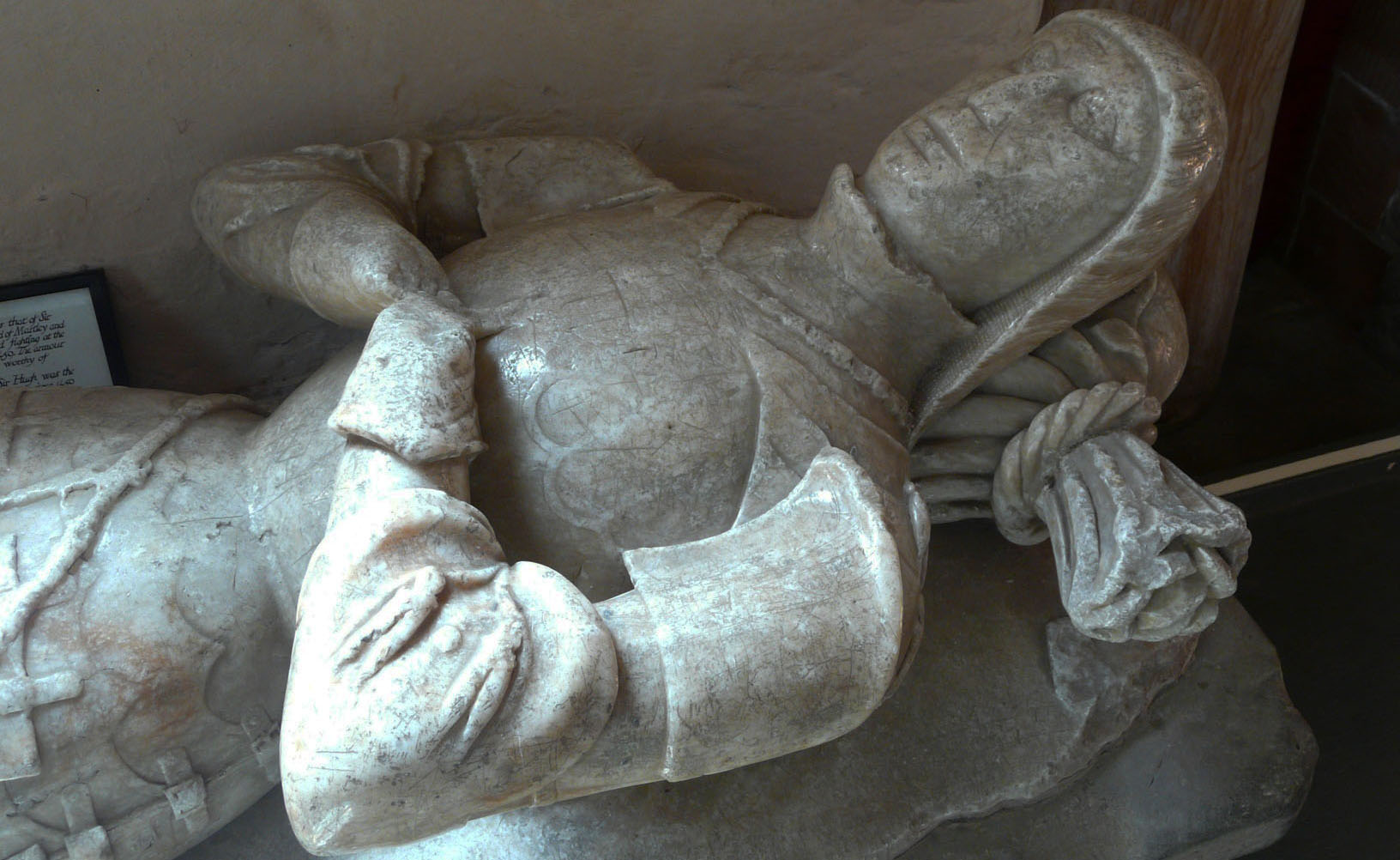
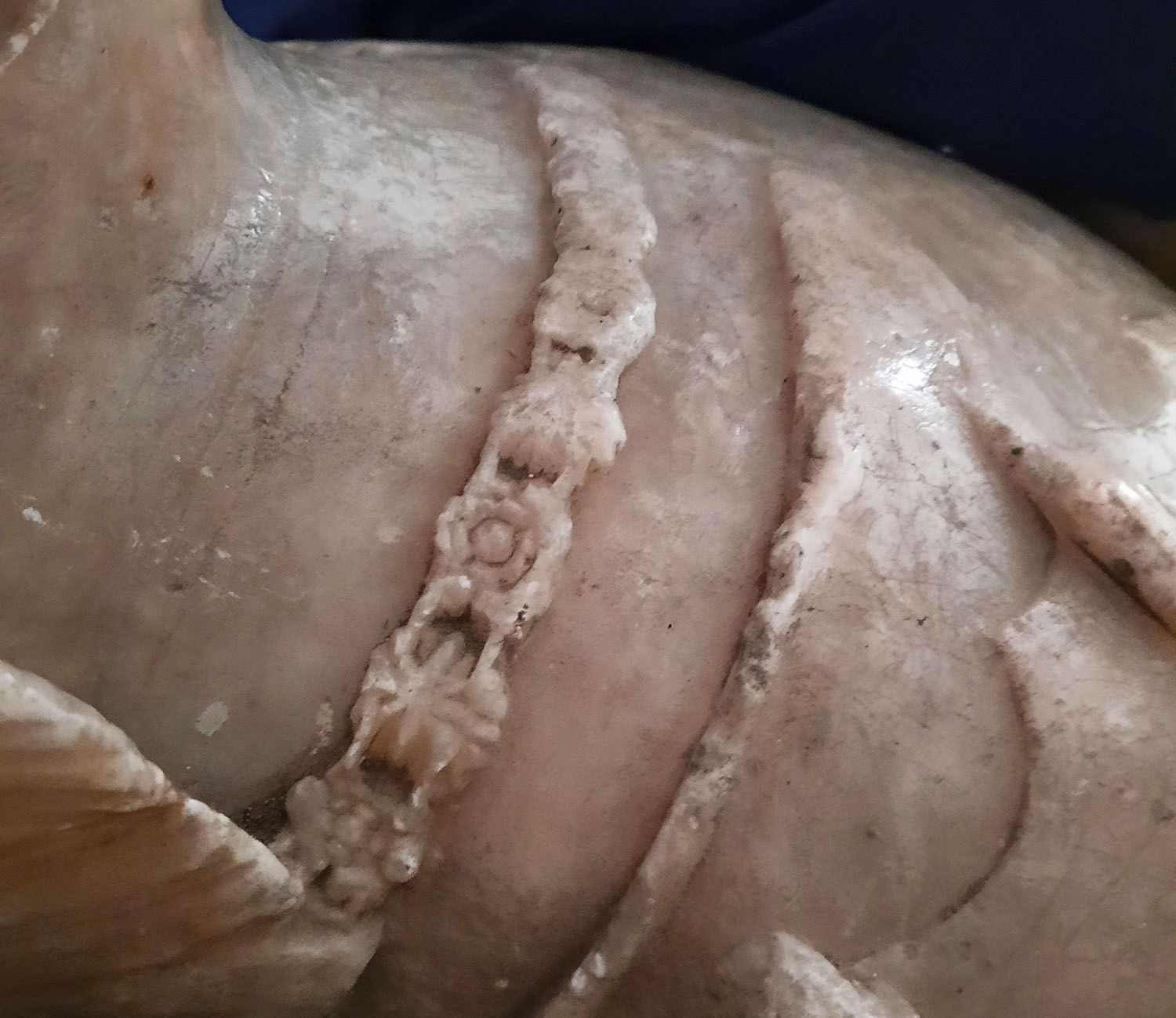
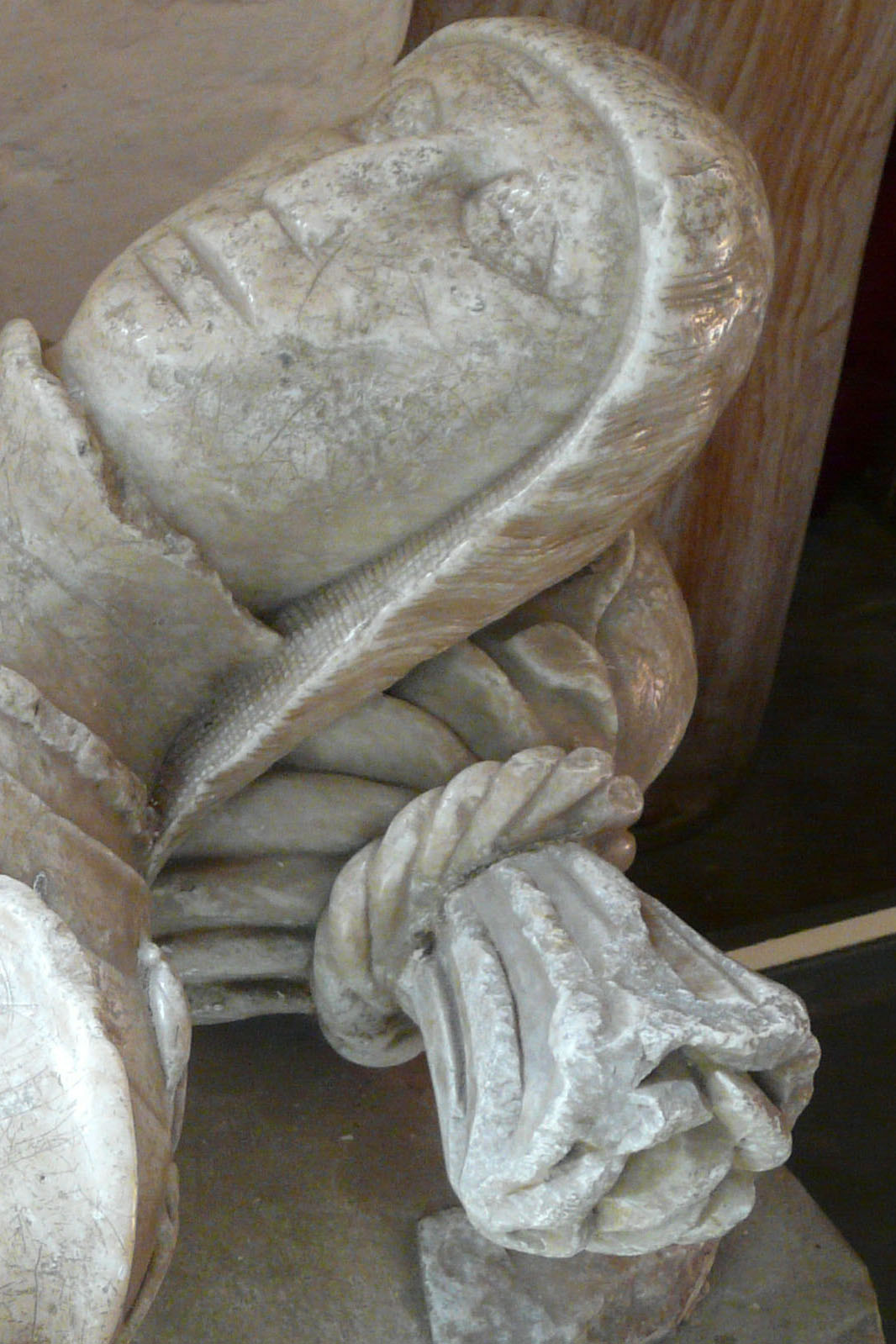

Leave A Comment